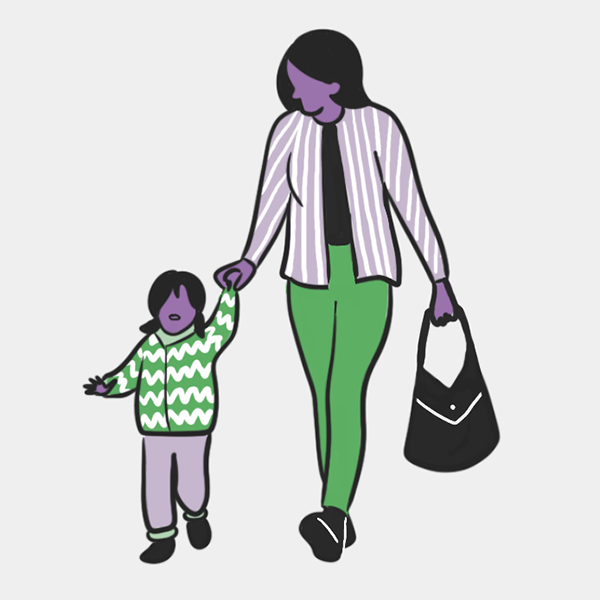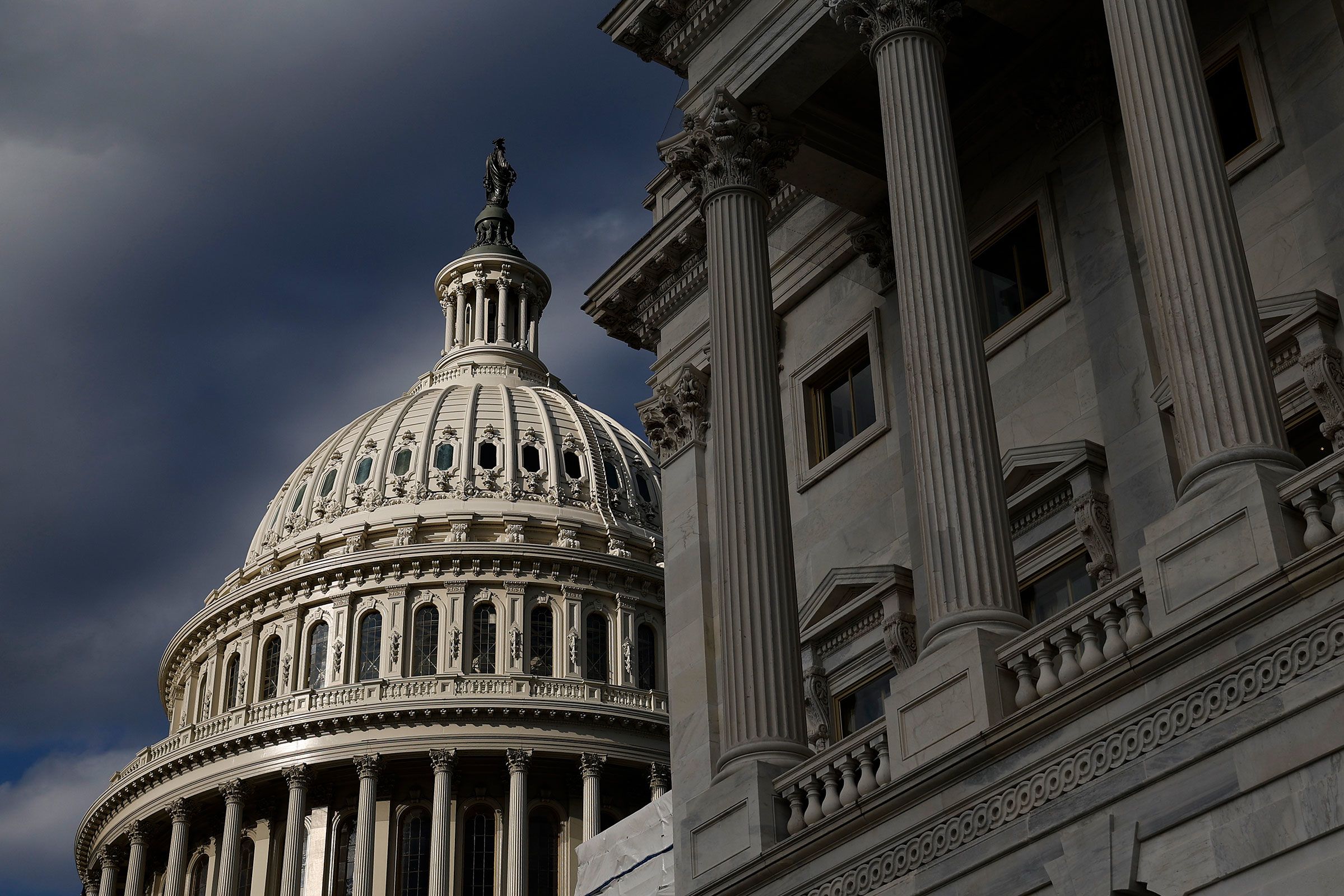
Are you better off in 2024?


President Joe Biden on July 21 announced that he would drop out of the presidential race. This page is no longer being updated.
The coming presidential election rematch presents Americans with a profound opportunity to compare their lived experiences under two very different presidents. President Joe Biden and former President Donald Trump diverged over the Covid-19 pandemic, disagree on how to help less fortunate American children, chose to do very different things with taxpayer dollars and have opposite views of American democracy — all of which impacted everyday American life to some degree.
Biden may benefit in November from the power of incumbency. Trump may be helped by a nostalgia for pre-pandemic life. All voters will have to ask themselves: under which president were they better off?

Has your economic situation improved?
Wages are up. The stock market has set records. Homes are worth more. While polling suggests most people are nervous about the economy as a whole, a majority of Americans told Gallup in an annual survey in January that their financial situation had either improved or stayed the same. People were feeling even better in January 2020, before the Covid-19 pandemic, when 80% said their financial situation had improved or stayed the same in the past year.
Most Americans are nervous about the direction of the country's economy. They are more likely in polling to say they are satisfied with their personal financial situation or that their situation has improved, but in recent polls, about half the country feels like their personal situation has gotten worse or they are unsatisfied. When Biden took office, a little more than a quarter of Americans said the country’s financial situation was excellent or good, according to Gallup. Today, that figure is about the same.
Investments have grown. For those fortunate enough to have investments, markets have gone up. The S&P 500 was at 2,271 when Trump took office and 3,852 when Biden took office, despite a plunge during the pandemic. It's around 5,300 today, more than double the value eight years ago.
People make more money. Average hourly earnings across all sectors were $26 in January 2017, when Trump took office, $29.93 in January 2021 and $34.75 today, according to the US Bureau of Labor Statistics. These figures don’t tell the full story, however, because they are not adjusted for inflation and are affected by the share of low- and high-wage workers in the country.
Homes are more valuable. Values have risen dramatically. The typical home, according to Zillow, was worth nearly $211,000 when Trump took office, nearly $275,000 when Biden took office and is nearly $359,000 as of April 2024.
Investments have grown. For those fortunate enough to have investments, markets have gone up. The S&P 500 was at 2,271 when Trump took office and 3,852 when Biden took office, despite a plunge during the pandemic. It's around 5,300 today, more than double the value eight years ago.
People make more money. Average hourly earnings across all sectors were $26 in January 2017, when Trump took office, $29.93 in January 2021 and $34.75 today, according to the US Bureau of Labor Statistics. These figures don’t tell the full story, however, because they are not adjusted for inflation and are affected by the share of low- and high-wage workers in the country.
Homes are more valuable. Values have risen dramatically. The typical home, according to Zillow, was worth nearly $211,000 when Trump took office, nearly $275,000 when Biden took office and nearly $359,000 as of April 2024.

Has it become difficult to afford daily living expenses?
You're doing better than a lot of Americans. Nearly two-thirds, 63%, said in Gallup's survey in January that they were suffering either severe or moderate hardship due to inflation. Many Americans — 41% — also say inflation is the most important financial concern their family faces, according to Gallup, citing the issue ahead of worries about the costs of housing, debt and health care.
$100 in January 2017 is the same as $107.72 when Biden took office and is the same as $129.12 today. The rate of inflation has indeed slowed, which means prices are not rising as fast as they were. But prices remain high, which is hurting people.
A lot of Americans feel the same way. Nearly two-thirds, 63%, said in Gallup's survey in January that they were suffering either severe or moderate hardship due to inflation. Many Americans — 41% — also say inflation is the most important financial concern their family faces, according to Gallup, citing the issue ahead of worries about the costs of housing, debt and health care.
$100 in January 2017 is the same as $107.72 when Biden took office and is the same as $129.12 today. The rate of inflation has indeed slowed, which means prices are not rising as fast as they were. But prices remain high, which is hurting people.
Nationwide, the price of food at home increased more than 24% on average between March 2020 and April 2024. Some of the steepest price hikes have been in categories such as eggs, pet food and baby formula.
Nationwide, the price of food at home increased more than 24% on average between March 2020 and April 2024. Some of the steepest price hikes have been in categories such as eggs, pet food and baby formula.

Has it become more difficult to move or find a house?
The Federal Reserve’s efforts to fight inflation have driven up the cost of borrowing money to buy a home. Many people feel priced out of the market. Others are struggling to afford rent. The typical US rent has jumped to $1,997, as of April, up from $1,542 in January 2021 and $1,337 in January 2017, according to the seasonally adjusted Zillow Observed Rent Index. The portion of renters spending more than 30% of income on rent and utilities rose from 46.3% before the pandemic to 49.6% in 2022, according to Harvard’s Joint Center for Housing Studies.
Mortgage rates are much higher. Average rates were 4.19% in January 2017, 2.77% in January 2021 and 7.02% today.
The Federal Reserve’s efforts to fight inflation have driven up the cost of borrowing money to buy a home. Many people feel priced out of the market. Others are struggling to afford rent. The typical US rent has jumped to $1,997, as of April, up from $1,542 in January 2021 and $1,337 in January 2017, according to the seasonally adjusted Zillow Observed Rent Index. The portion of renters spending more than 30% of income on rent and utilities rose from 46.3% before the pandemic to 49.6% in 2022, according to Harvard’s Joint Center for Housing Studies.
Mortgage rates are much higher. Average rates were 4.19% in January 2017, 2.77% in January 2021 and 7.02% today.
It's harder to get by in some states than others. Buying a typical home in California, the most expensive state, requires more than $197,000 in annual income. In Mississippi, it’s less than $64,000.
It's harder to get by in some states than others. Buying a typical home in California, the most expensive state, requires more than $197,000 in annual income. In Mississippi, it’s less than $64,000.

Have you lost a job in the last few years?
Hopefully you were able to find a new one. Most Americans are not looking for work. You might not have the job you want, but it is possible to have a job. There are millions of job openings in the US.
Most Americans are not looking for work and the data suggests there are jobs to be had. You might not have the job you want, but it is possible to have a job. There are millions of job openings in the US.
The unemployment rate remains historically low. It was 4.7% in January 2017, 6.4% in January 2021 (during the Covid-19 pandemic) and 3.9% in April. The current rate remains quite low compared with the historical average since 1948: 5.7%.
The unemployment rate remains historically low. It was 4.7% in January 2017, 6.4% in January 2021 (during the Covid-19 pandemic) and 3.9% in April. The current rate remains quite low compared with the historical average since 1948: 5.7%.

Do you think it’s true that the poverty rate in the US is decreasing?
When Biden took office, his temporary pandemic relief measures helped push the poverty rate down to 7.8% in 2021. But it jumped back up to 12.4% the next year, after several programs expired. Still, it remains lower than the 13% rate in 2017, when Trump took office.
When Biden took office, his temporary pandemic relief measures helped push the poverty rate down to 7.8% in 2021. But it jumped back up to 12.4% the next year, after several programs expired. Still, it remains lower than the 13% rate in 2017, when Trump took office.

Are you happier than you were?
Happiness is obviously personal and subjective, but Gallup tries to rank countries by happiness each year. In 2024, for the first time since Gallup started the project in 2005, the US fell out of the top 20 happiest countries. Young people in the US — those under 30 — scored much lower on Gallup’s happiness scale than Americans over 60.
Americans’ general satisfaction with the direction of the country has also suffered in recent decades, according to a different Gallup poll, especially after the financial crisis in 2008.
You're not alone. Happiness is obviously personal and subjective, but Gallup tries to rank countries by happiness each year. In 2024, for the first time since Gallup started the project in 2005, the US fell out of the top 20 happiest countries. Young people in the US — those under 30 — scored much lower on Gallup’s happiness scale than Americans over 60.
Americans’ general satisfaction with the direction of the country has also suffered in recent decades, according to a different Gallup poll, especially after the financial crisis in 2008.

Do you feel as free?
The nonprofit, pro-democracy group Freedom House gives countries freedom scores in multiple categories. The US ranking of 83 makes it a "free country." But that ranking has fallen in recent years from 89 in 2017, the year Trump took office. The US has lost points because "its democratic institutions have suffered erosion, as reflected in partisan pressure on the electoral process, bias and dysfunction in the criminal justice system, harmful policies on immigration and asylum seekers, and growing disparities in wealth, economic opportunity, and political influence."
The nonprofit, pro-democracy group Freedom House gives countries freedom scores in multiple categories. The US ranking of 83 makes it a "free country." But that ranking has fallen in recent years from 89 in 2017, the year Trump took office. The US has lost points because "its democratic institutions have suffered erosion, as reflected in partisan pressure on the electoral process, bias and dysfunction in the criminal justice system, harmful policies on immigration and asylum seekers, and growing disparities in wealth, economic opportunity, and political influence."

Do you feel safer than you did four years ago?
National incidents of gun violence in the US have remained relatively consistent over the last four years, with 2024 off to a quieter start than usual, according to the Gun Violence Archive, a nonprofit group formed in 2013 to track gun-related violence. From January to April 9, 2024, the GVA recorded 9,877 incidents compared with 11,109 at the same time in 2023 and 9,310 in 2020. Notably, rates of US shootings fell in 2020 because of the Covid-19 pandemic.
The frequency of mass shootings has also fallen slightly so far in 2024 compared with recent years. In 2024, there have been 105 recorded mass shootings as of April 9 compared with 149 in 2023 and 80 in 2020 during the same time period.
While national crime data is only available through 2022, rates fell between 2020 to 2022. While the rate of violent crime per 100,000 people was 398.5 in 2020, it dipped to 380.7 in 2022.
On the other hand, hate crimes are reportedly on the rise. A report from the Center for the Study of Hate and Extremism at California State University found hate crimes reached record levels in 2023. The report looked at the number of hate crimes reported to police in the nation’s 10 largest cities, finding 2,184 were reported in 2023, an increase of nearly 13% from 2022.
National incidents of gun violence in the US have remained relatively consistent over the last four years, with 2024 off to a quieter start than usual, according to the Gun Violence Archive, a nonprofit group formed in 2013 to track gun-related violence. From January to April 9, 2024, the GVA recorded 9,877 incidents compared with 11,109 at the same time in 2023 and 9,310 in 2020. Notably, rates of US shootings fell in 2020 because of the Covid-19 pandemic.
The frequency of mass shootings has also fallen slightly so far in 2024 compared with recent years. In 2024, there have been 105 recorded mass shootings as of April 9 compared with 149 in 2023 and 80 in 2020 during the same time period.
While national crime data is only available through 2022, rates fell between 2020 to 2022. While the rate of violent crime per 100,000 people was 398.5 in 2020, it dipped to 380.7 in 2022.
On the other hand, hate crimes are reportedly on the rise. A report from the Center for the Study of Hate and Extremism at California State University found hate crimes reached record levels in 2023. The report looked at the number of hate crimes reported to police in the nation’s 10 largest cities, finding 2,184 were reported in 2023, an increase of nearly 13% from 2022.

Do you feel healthier than you did four years ago?
Public health has demonstrably improved since 2020 when the country was first navigating the Covid-19 pandemic.
In April 2020, many Americans were facing lockdown restrictions or at risk of catching the coronavirus. Four years after the first outbreak, Covid-19 hospitalizations continue to fall – this year through early April, there were about 260,000 Covid-19 admissions compared with around 890,000 during this same period in 2021.
The health insurance rate has also improved. The percent of Americans younger than 65 who were uninsured during the National Health Interview Survey fell from 12.1% in 2019 to 8.9% in 2023. That’s roughly 8.6 million people.
Who you are and where you live can dramatically affect your health. As a country, public health has demonstrably improved since 2020 when the country was first navigating the Covid-19 pandemic.
In April 2020, many Americans were facing lockdown restrictions or at risk of catching the coronavirus. Four years after the first outbreak, Covid-19 hospitalizations continue to fall – this year through early April, there were about 260,000 Covid-19 admissions compared with around 890,000 during this same period in 2021.
The health insurance rate has also improved. The percent of Americans younger than 65 who were uninsured during the National Health Interview Survey fell from 12.1% in 2019 to 8.9% in 2023. That’s roughly 8.6 million people.
Still, while life expectancy statistics in the US are showing signs of rebounding since the pandemic, they’re still lower than the past. While the average US lifespan grew to 77.5 in 2022 from 77 in 2020, this is down from 78.8 four years ago in 2019.
Still, while life expectancy statistics in the US are showing signs of rebounding since the pandemic, they’re still lower than the past. While the average US lifespan grew to 77.5 in 2022 from 77 in 2020, this is down from 78.8 four years ago in 2019.






